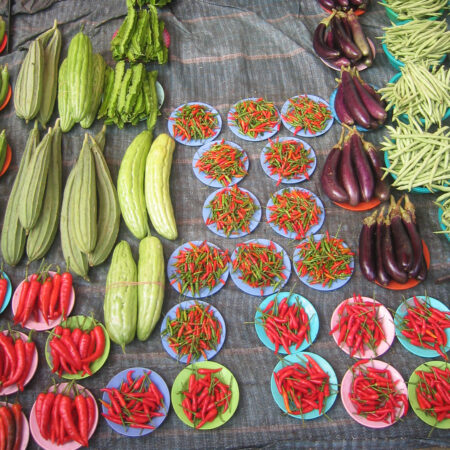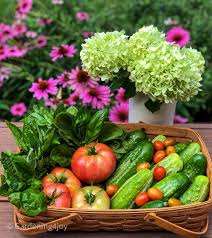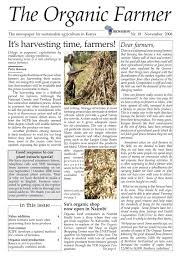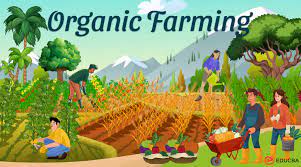
Organic farming statistics reveal a growing trend towards sustainable agriculture practices worldwide. In recent years, there has been a notable increase in the adoption of organic farming methods, driven by consumer demand for healthier and environmentally friendly food options. According to industry reports, the organic food market has shown robust growth, reflecting a shift towards organic produce and products. This trend is supported by data showing that organic farming helps preserve biodiversity, reduce soil erosion, and minimize chemical inputs compared to conventional farming. Additionally, consumer awareness about the benefits of organic foods, such as higher nutrient content and absence of synthetic chemicals, continues to drive market expansion. As governments and organizations promote organic agriculture through incentives and certifications, the sector is expected to continue its upward trajectory, contributing to sustainable food systems and global environmental goals.

Organic farming statistics provide a comprehensive view of the global shift towards sustainable agriculture practices and the growing consumer preference for organic products. This burgeoning trend is underscored by a wealth of data reflecting increasing adoption rates, market expansion, environmental benefits, and consumer insights.
The organic farming sector has witnessed significant growth in recent years, both in terms of land under organic cultivation and market size. According to the latest organic farming statistics, the global organic agricultural land reached approximately 72.3 million hectares by 2020, marking a steady increase from previous years. This expansion is indicative of farmers’ and consumers’ growing interest in sustainable farming practices that prioritize soil health, biodiversity conservation, and reduced chemical use.
In terms of market growth, the organic food and beverage market has experienced robust expansion worldwide. Organic farming statistics indicate that global organic food sales exceeded $120 billion in 2020, with projections suggesting continued growth in the coming years. This growth is driven by rising consumer awareness about the health benefits of organic foods, such as higher levels of antioxidants, vitamins, and minerals compared to conventionally grown produce.
Consumer demand plays a pivotal role in shaping the organic farming landscape. Surveys and market research consistently highlight that consumers are increasingly seeking out organic products due to concerns about food safety, environmental sustainability, and personal health. Organic farming statistics reveal that a significant percentage of consumers are willing to pay a premium for organic foods, underscoring the perceived value and quality associated with organic farming practices.
From an environmental perspective, organic farming statistics underscore the positive impacts of organic agriculture on ecosystems and natural resources. Organic farming methods prioritize biodiversity conservation, promote healthy soil ecosystems, and minimize pollution by avoiding synthetic pesticides and fertilizers. Studies show that organic farming reduces soil erosion, improves water quality, and enhances carbon sequestration in agricultural soils, contributing to climate change mitigation efforts.
Moreover, organic farming statistics indicate that organic farms often serve as havens for wildlife and beneficial insects, fostering greater ecological resilience compared to conventional farms. The preservation of natural habitats and the integration of biodiversity-friendly practices are key components of organic farming systems, aligning with principles of agroecology and sustainable land management.
In addition to environmental benefits, organic farming statistics highlight the socio-economic advantages of organic agriculture for rural communities and small-scale farmers. Organic farming often provides opportunities for diversified income streams, increased market access, and improved resilience to market fluctuations. Certification as organic can also open doors to premium markets and export opportunities, offering economic incentives for farmers to adopt sustainable agricultural practices.
Government policies and initiatives play a crucial role in supporting the growth of organic farming. Many countries offer subsidies, grants, and technical assistance programs to help farmers transition to organic practices and obtain organic certification. Organic farming statistics indicate that government support has been instrumental in expanding the organic sector, particularly in regions where sustainable agriculture is prioritized as part of national food security and environmental sustainability agendas.
Looking ahead, organic farming statistics suggest continued growth and evolution in the organic farming sector. As consumer awareness and demand for organic products continue to rise, there is a corresponding need for increased investment in organic research, extension services, and infrastructure development. Innovations in organic farming techniques, such as precision agriculture and agroecological approaches, are expected to further enhance productivity, profitability, and sustainability within the organic farming sector.
In conclusion, organic farming statistics underscore a global paradigm shift towards sustainable agriculture practices that prioritize environmental stewardship, consumer health, and economic viability. With expanding organic agricultural land, growing market size, and increasing consumer demand, organic farming is poised to play a pivotal role in shaping the future of food production systems worldwide. By embracing organic farming principles and supporting its continued growth, stakeholders can contribute to building resilient and sustainable food systems that benefit both people and the planet for generations to come.









